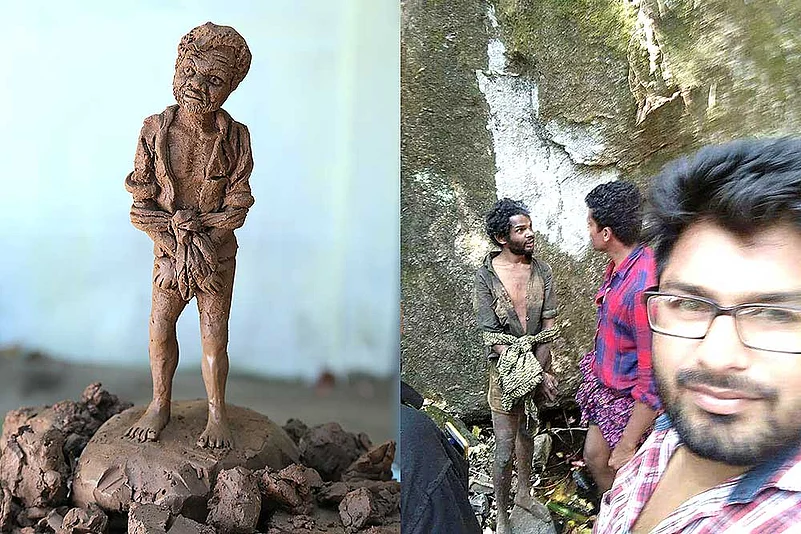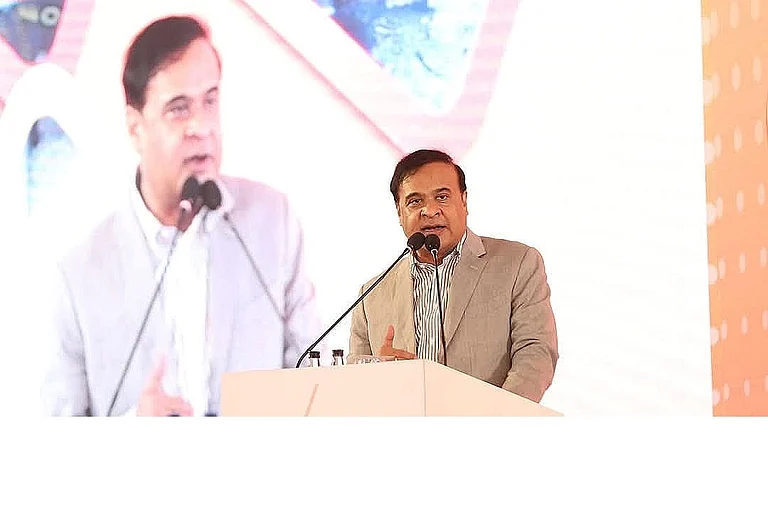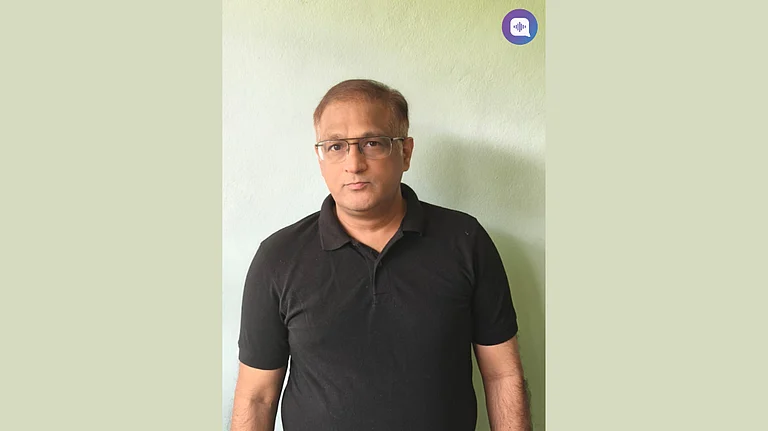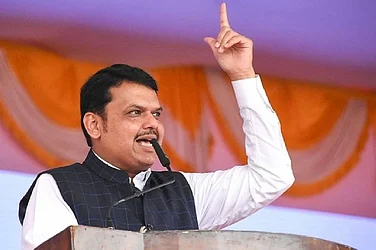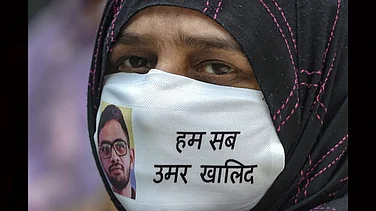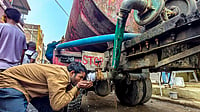“Feed Madhu’s starving family.” That’s the eye of a socio-political storm which has been ravaging Kerala since a mob in Attappadi lynched a 27-year-old tribal youth, allegedly for having stolen a few handfuls of rice and coriander powder. The opposition has been quick to castigate the ruling Left Democratic Front (LDF) for its failure to lift victim A. Madhu’s community out of abject poverty and protect them from exploitation, while the government rejected the charges, framing the tragedy purely in terms of mob violence and the victim’s unique vulnerability. There is the social plane, with a legion of artists having taken to pen, easel and INStrument to pay their own tribute to Madhu, only for some who are closer to the issues to dismiss them as privileged armchair activists looking to salve their own consciences. And finally, there is the need to examine the psychology of mob violence against the marginalised—an increasingly worrying trend in the state.
“What an amazing variety of attempts to establish that Attappadi and Kerala are Somalia, using social, print and visual media,” exclaims M.B. Rajesh, the CPI(M) MP for Palakkad—the constituency which contains Attappadi—in a Facebook post. Decrying the clamour to “feed Madhu’s starving family” as a manufactured rallying cry for the Sangh Parivar to take advantage of Madhu’s death, he, after a visit to the bereaved family in their hamlet of Kadukumanna, describes them as reasonably well-off. When it comes to Madhu himself, Rajesh explains his murder as the climax of an avoidable, individual tragedy.

Madhu’s mother and relatives mourn beside his body, Attappadi
Thambu, an NGO that works with tribal people in Attappadi, has a very different perspective. Its convenor K.A. Ramu, who is now secretary of the Madhu Murder Action Council, went from hamlet to hamlet in the area to inform the people of the young man’s murder—and their subsequent protests would bring the region to a halt. “This death has pained the adivasis and they are frightened by the open display of violence,” says Ramu, clearly associating Madhu’s fate with systemic factors, in sharp contrast to Rajesh’s account. “Our lands have been taken by these encroachers and as we are pushed to the margins, we are annihilated. The infant deaths, malnutrition and now this killing of Madhu is all part of the violence against us. Even the sacred hills that we worshipped are now being converted into resorts.”
There is a second level on which a dichotomy has emerged. As people reacted with horror to the death, artists and poets expressed their anguish through their own accustomed forms of expression. Novelist K.R. Meera exhorts the mob to divide the fingers, legs and eyes among themselves in a macabre poem that is both frightening in its language and painful in its cadence.

Madhu Unshackled by Rithun, Kalakakshi
Kalakakshi, an artists’ collective in Kochi, had the painter Rithun working on a watercolour even as his companions addressed a crowd. They carried their work all around Kochi before going to Mukkali in Attappadi—the site of the murder. The rock band Oorali performed at Madhu’s funeral. “Madhu’s death was shocking for us and we have seen how the people behave very differently towards strangers and the marginalised in the state. We appealed to the youth in speak-song and now Madhu will always be part of our performan-ces,” says lead vocalist Martin John Challissery. Jasinther Rokefeller, an artist with Kalakakshi who also went to Attappadi, adds, “There have been numerous incidents of violent mobs beating people up in the recent past in Kerala and other parts of India and we felt we needed to use this platform to speak out.” Davinchi Suresh, an artist from Kodungalloor south of Thrissur, has contributed a one-and-a-half-foot tall sculpture of Madhu.
But some tribal and Dalit activists have come down heavily on the righteous indignation of these well-to-do, celebrity artists. In Kerala of old (as depicted religiously in Malayalam films), householders would cry out “Attaazha Pashnikkaarundo?”—‘Are there any hungry people who need dinner?’—intending to distribute food to the needy before shutting their doors for the night. Was this a genuinely altruistic act, or merely a token gesture for the janmis (landlords) to expiate their guilt by performing a little charity for the keezhaalar (those at the bottom of the social hierarchy)?

Social activists protest Madhu’s killing in Kochi
Taking the latter interpretation, these critics dismiss the artists’ contributions as nothing more than an echo of that shallow cry of Attaazha Pashnikkaarundo; a superficial sympathy that they’ve deployed in order to feel better about themselves. Dalit writer S. Chandramohan’s poem titled “A posthumous letter to the Malayalam language by Madhu, Attappadi” critiques the intention of these protesting artists, calling it as violent as the crime itself. He says that the tribals, who are on the verge of extinction have lost their language, their land and their many varieties of paddy—and now a sculpture has relegated them to a museum piece. And the selfie that the alleged murderers took with a tied-up Madhu before killing him is, he says, a reflection of our sadistic pleasures.
Parliamentarian Rajesh paints a pretty, upwardly mobile picture of Madhu’s family: his mother works at an anganwadi, as does his sister, who studied until Class XII. Another sister, who has a B.Com degree, is waiting for her appointment to the police, while her husband is a senior clerk in the economics and statistics department. They have a house with electricity, a telephone and a TV, and one acre of land where they cultivate bananas. And they reject any insinuation that they are going hungry.
As for Madhu, he started showing signs of mental illness nine years ago—and grew apart from his family and refused to go along with any of their attempts to get him treated. They never approached the government or any health workers for help. All in all, Rajesh’s narrative absolves the government of any culpability—indeed, it seems that there was nothing they could have done with the knowledge they had.
That said, the prevalence of mob violence against members of marginalised groups in Kerala continues to be highlighted in the discourse. Cases in the last two months include: three women assaulting a mentally ill woman in Kochi before handing her over to the police, a mob beating up a mentally ill migrant worker in Kannur on suspicion of being a kidnapper and a transwoman being assaulted in Thiruvananthapuram for the same reason.

Artists protest at Gandhi Square in Kottayam
Psychiatrist C.J. John thinks the mobs model themselves on superheroes who take the law into their hands on the silver screen—only in these cases they are directing the violence towards the helpless and marginalised. The victims, who form no significant vote banks of their own, have no political protection.
Taking a somewhat Hobbesian perspective, he says “Aggressive behaviour is dormant in every human being and is kept under control because of his or her fear of the police and law. But in a crowd, individualism is lost and the mob mentality takes over. Is this behaviour emerging from the vestiges of the feudal janmi–keezhaalar...psyche that’s lying dormant in the subconscious?” Quite a few agree when he notes that the adivasis, migrant labourers, and transpeople are the new keezhaalar.
By Minu Ittyipe in Attappadi






